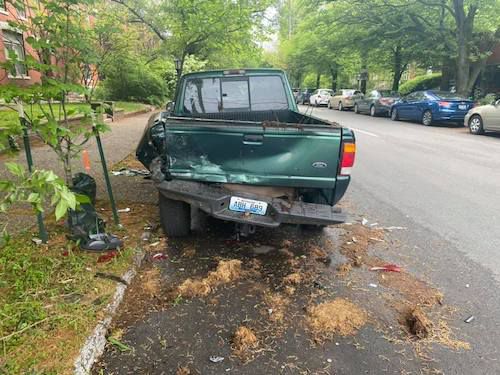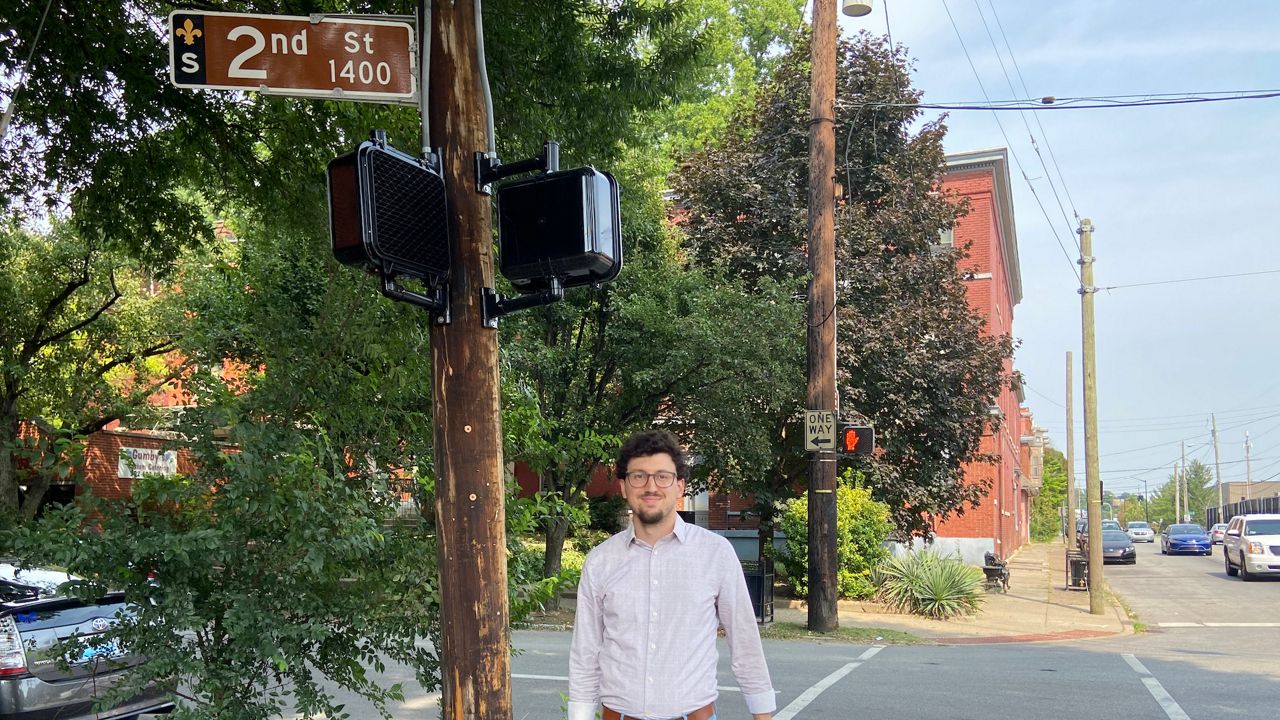LOUISVILLE, Ky. — In the four years that Logan Gatti has lived on the corner of Second and Hill streets in Old Louisville, he’s witnessed roughly 60 car crashes, lost two vehicles in a hit-and-run, received two subpoenas to testify in trials related to other accidents, and cringed countless times as friends and loved ones arrived to visit him and his wife.
“It’s gotten to a point where it’s not a desirable place to live right now,” said Gatti, who has called Old Louisville home for more than a decade.
The problem, as Gatti sees it, is that traffic on Second Street runs in only one direction through his neighborhood, making it easier for cars to speed toward downtown and leading to regular crashes. Evidence of those accidents were visible on the street in early August, with shards of shattered glass piled in the grass next to the asphalt and a telephone pole at Second and Burnett streets held together by two-by-fours and caution tape.
Now Gatti trying is to do something about it. This summer Gatti launched an effort called “2-Way 2nd Street” that seeks to change the traffic pattern on the road. The move came days after his vehicles were totaled when a motorist ran into them and Magnolia Bar, two blocks away on Second Street, saw an SUV nearly drive into it.
“It’s beyond time,” Gatti told Spectrum News 1. “One-way streets are a remnant of the past.”
Metro Council President David James, who represents Old Louisville, agrees. A decade ago, James worked to convert Brook and First streets into two-way roads. As a result, they are safer, with slower traffic and improved economic development, he said.
Now, he hopes those same changes will come to Second and Third streets, which currently sends one-way traffic southbound through Old Louisville.
“We have to get permission from the state to do it,” James said, noting that Second and Third streets are state roads. “The first step is to do a study, so we put money in the budget this year for that.”
For Gatti, who was once clipped by a car on Second Street and has seen his dog, Randy, hit too, the change can’t come soon enough. “If I wake up in a hospital,” he said, “I’m not going to be surprised.”

Multilane, one-way roads were uncommon in the middle of the last century, but suburbanization helped change that after World War II. Old Louisville, the city’s original suburb, saw disinvestment and white flight during the postwar years. Many streets were converted from two-way to one-way during that period, allowing traffic to move faster and reducing congestion.
But in the last several decades the trend has reversed and its effects are clear on Brook and First streets, said University of Louisville urban planning expert John Gilderbloom. “This neighborhood has bloomed,” he said of the portions of Old Louisville around those two streets.
In 2015, Gilderbloom and William Riggs, a professor at the University of San Francisco School of Management, published research showing that the conversions of Brook and First streets reduced traffic accidents.
James has observed the same change. “It slows cars down,” he said of converting one-way streets to two-way. “When people are going the same direction, it turns into somewhat of a drag race. When they're going the opposite direction, they pay a lot more attention because there are cars coming at them."
Gilderbloom’s research showed other measurable benefits to moving away from one-way streets. “Two-way streets result in a lot less deaths, hospitalizations, higher home values, calmer streets, and greater walkability,” he said.
Gatti said one-way streets also make the area feel overlooked. “This is the embodiment of a diverse community and all we’re doing by timing the lights and keeping it one-way is giving people, who live in the suburbs, extra highways and telling the people, who live here, to keep their head on a swivel and hope they don’t get hit by a car,” he said.
There are financial and psychological downsides to living on a street like that, too. Gatti said his car insurance rates are higher than they would be if he lived in other parts of the city and he sometimes wonders about the wisdom of starting a family on a street where he’s witnessed dozens of car crashes.
Ultimately though, he said he loves Old Louisville and is building community support to convert Second Street, and others around it, rather than taking the “cowardly way out and moving.”
“If there's an issue, let’s fix it,” he said. “That’s what we’re here for.”



